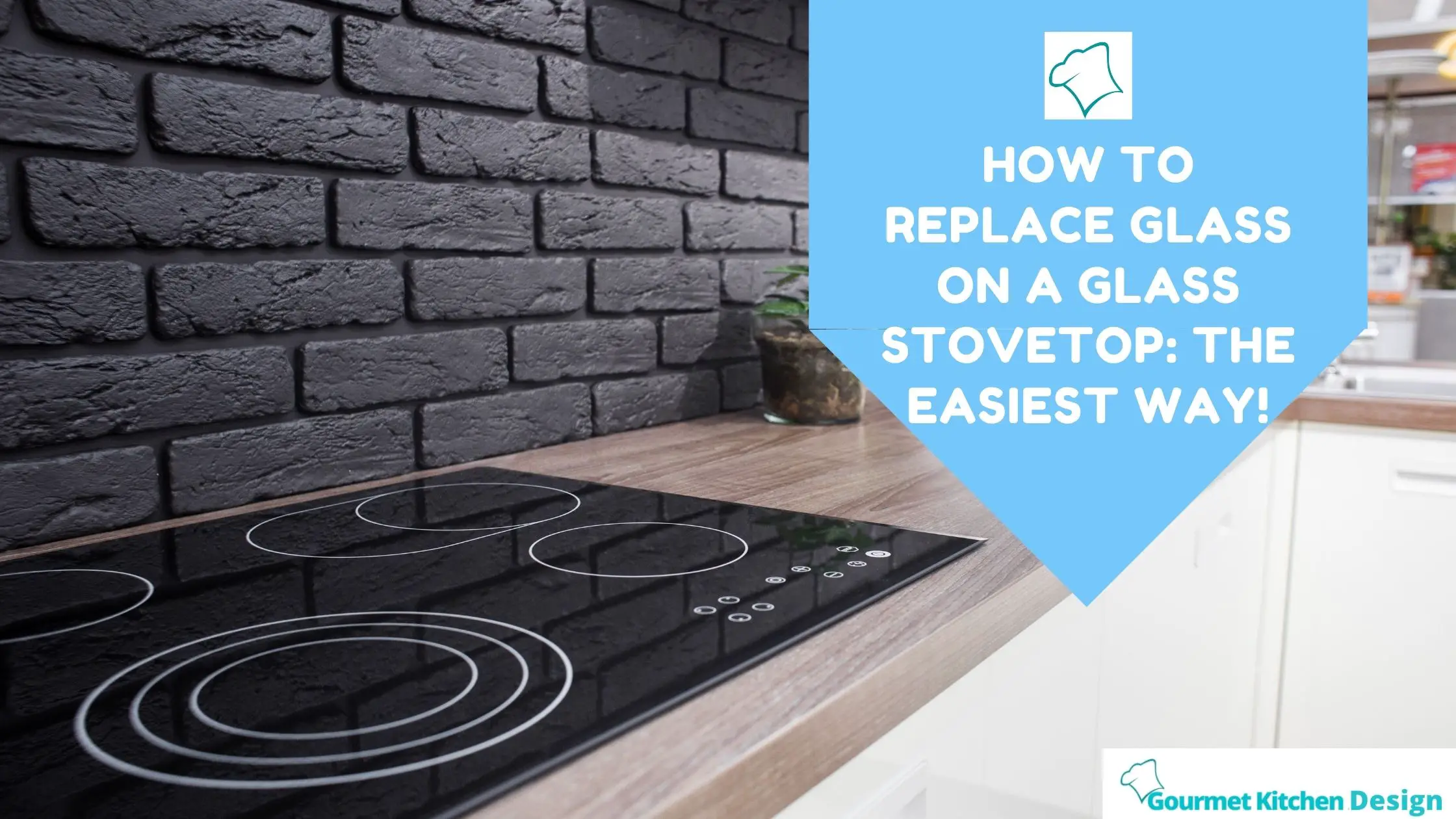Stoves with glass tops are stunning. They’re comfortable and easy to use. And that shining surface gives your kitchen a clean appearance.
Another advantage of glass stovetops over other stovetops is their ease of cleaning. You may wipe the entire stove without scrubbing individual parts.
But, glass stovetops do not forever stay pristine. Your cast iron and ceramic cookware can scratch and break it. However, you do not need to replace the entire stove. It’s easier than it seems to replace the glass on your glass stovetop.
If you are ready to replace it, let’s get started!
Materials and Tools Needed To Replace Glass on a Glass Stovetop
- Work gloves
- Screwdriver
- Pliers
- Vacuum
- Sturdy prop (2′ long scrap wood)
Check out the video below!
7 Steps in Replacing Glass on a Glass Stovetop

- Buy a replacement part
Before you begin, make sure you have a new cooktop. You can find the model number and serial number on the back or inside the stoves and ranges. You can order it online and deliver it to your home.
- Safety first

Although the glass top does not have electricity, the burners beneath it are. And you will be working with the burners underneath. Before starting any repair, always consider your safety and unplug the stove.
A friendly reminder not to use a cracked stove! Even small cracks can result in electrocution.
Remember to put on your gloves to protect your hands. Sharp edges are likely to be found on the inside of any appliance.
- Unfasten the cooktop
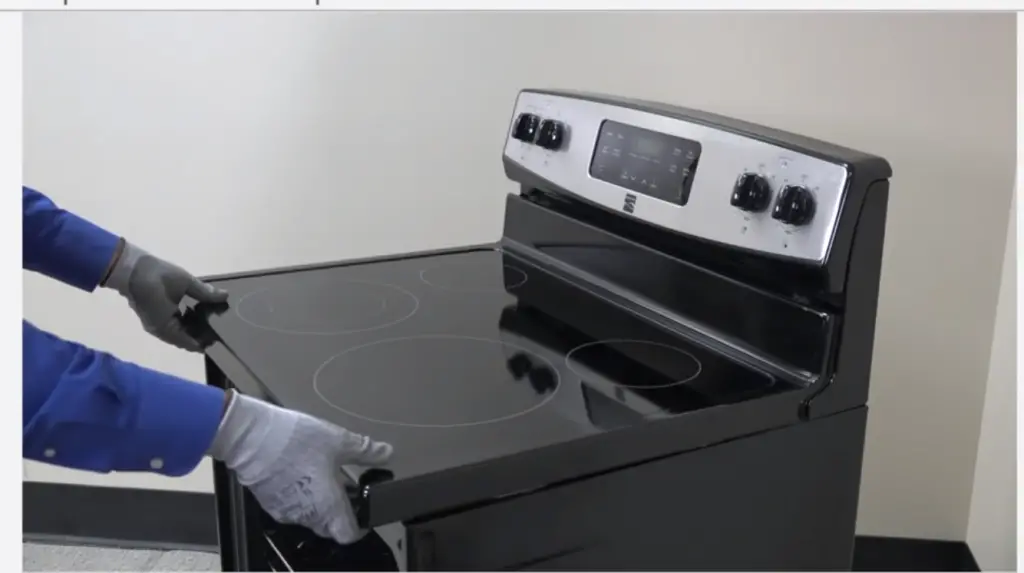
Open the oven door to start removing the cooktop. It is required to access the cooktop’s underside.
Pull the cooktop assembly slightly forward to remove the front cabinet support bracket from the glass cooktop frame. Removing the cooktop’s hinge tabs from the backguard requires raising the cooktop’s front slightly.
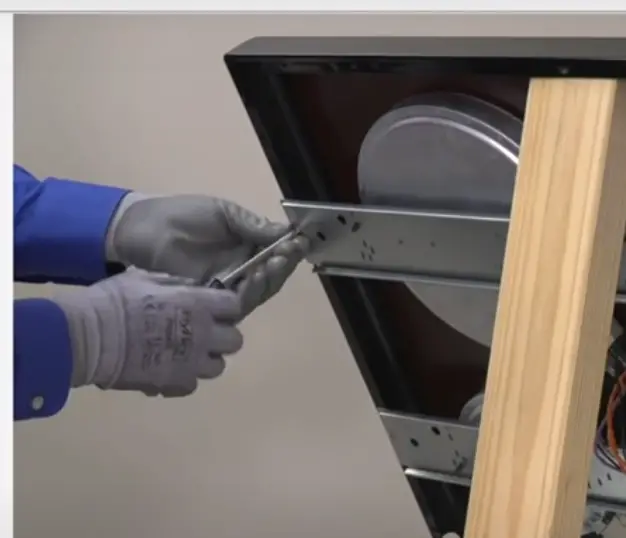
And prop open the glass cooktop’s front edge. Place the prop in front of the stove so it doesn’t fall.
- Remove all of the cooktop’s surface elements
Remove the screws from the support bracket for the front surface elements and carefully lower the front pieces and bracket onto the oven insulator. Lower the rear surface parts onto the oven insulation by repeating the process.
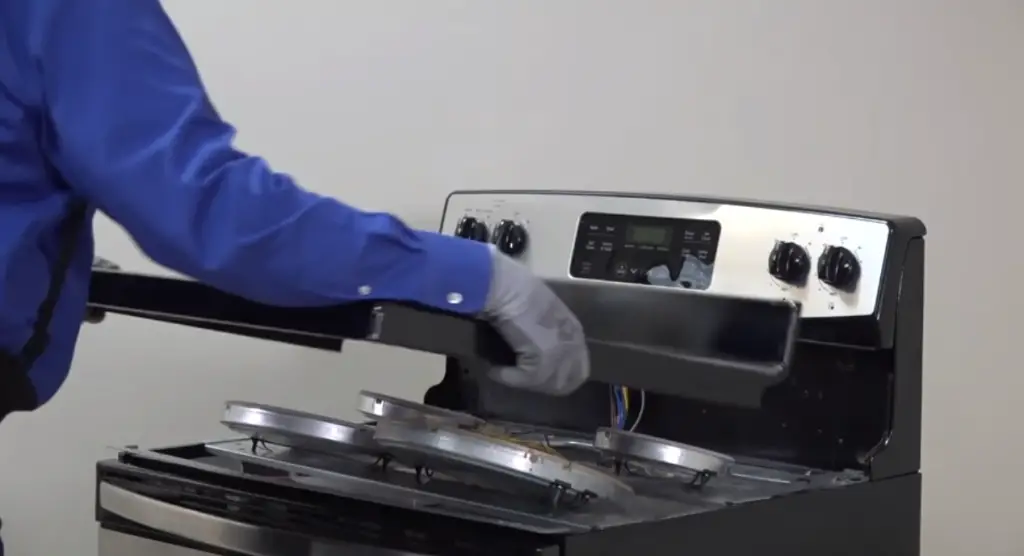
- Remove the glass top
Now it’s time for you to remove the old glass stovetop, which is now entirely detached from the rest of the framework. You need to take out the prop first. Then, lifting and backing up simultaneously to remove the glass top away. The part is quite heavy, so be careful.
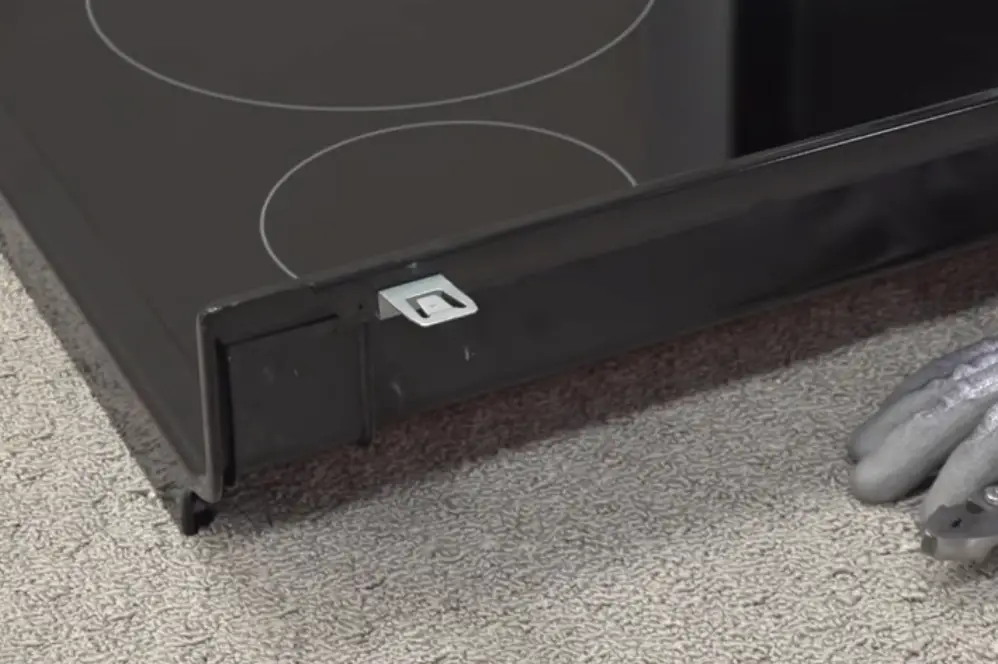
- Transfer the hinge tabs
Remove each hinge tab from the old cooktop with a slot screwdriver. Put the tabs on the new cooktop by bending each hinge tab slot inward to ensure a tight fit.
- Install the new glass top
Carefully place the new glass top in the same position as the previous one. Prop your glass stovetop up by lifting the front end.
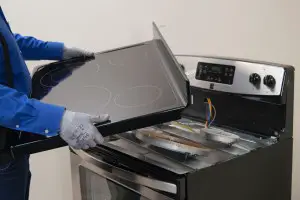
Attach the support bracket and surface elements to the new cooktop. And repeat the process.
Remove the cooktop’s supporting prop carefully and lower the cooktop.
When you put the front lip of the cooktop frame under the front cabinet support bracket, slide the sides over the ends of the support bracket. Push the cooktop back and put the hinge tabs into the backguard slots.
Install the mounting screws in the cooktop frame’s front lip. And close the oven door.
Here is a video from Sears PartsDirect for your reference:
Why Do Glass Stovetop Cracks?
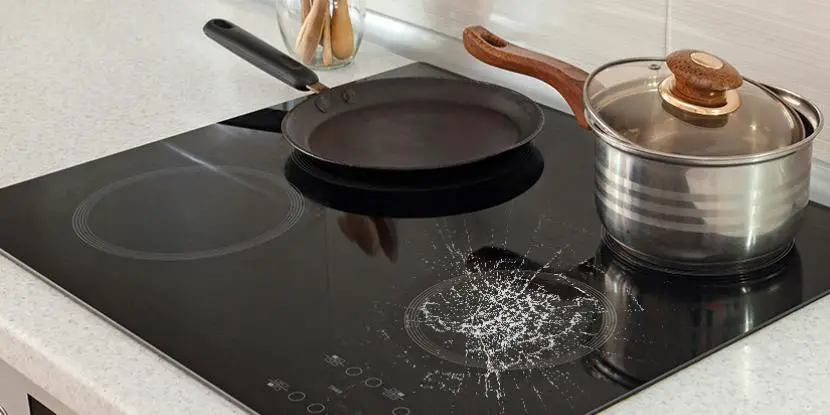
- Dropping or banging a heavy object against the surface will certainly result in damage.
- Dragging rough cookware across the glass surface creates micro-scratches. They can damage the structure of the glass to the point of cracking.
- Heat exposure for an extended time might cause the glass to crack.
- Cooked food on the surface can develop hot spots, leading to cracking.
- Sudden exposure to the heat of the cold glass can cause thermal shock.
People Also Ask
Can you still cook on a glass cooktop that has been cracked?
Using a stove with a crack is not safe. Even small cracks make the chance of getting electrocuted higher. If the glass-ceramic surface has small cracks, you might be able to replace it, but if the cracks are bigger, you’ll need a whole new cooktop.
How long do glass top stoves last?
The average lifespan of an electric range or cooktop is between 10 and 13 years, while induction ranges and cooktops only last about 8 to 10 years.
What’s the difference between a glass cooktop and a ceramic Cooktop?
Glass cooktops, also known as ceramic cooktops, are smooth, flat stovetop surfaces made of tempered ceramic glass and heated by metal coils hidden beneath the glass.
Conclusion
Finally, you have replaced the glass on your glass stove. You can try it out first. Plug the stove and get ready to cook your family an omelette or chicken and dumplings!
However, keep in mind that doing appliance repairs can be dangerous. Follow all directions and use the proper tools and safety equipment listed in the guide.
Proceed only if you are sure you understand all of the instructions and can finish the repair. Some repairs should only be done by a trained professional.
Do you find this blog to be helpful? Let me know in the comments what you think!

